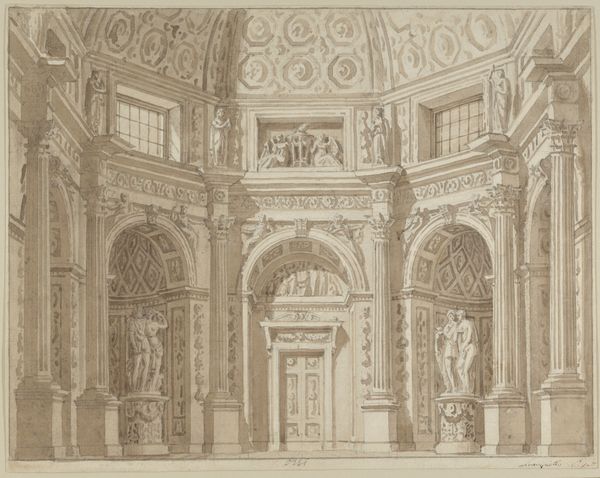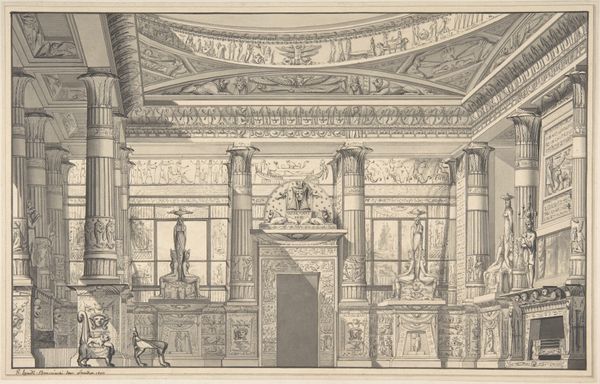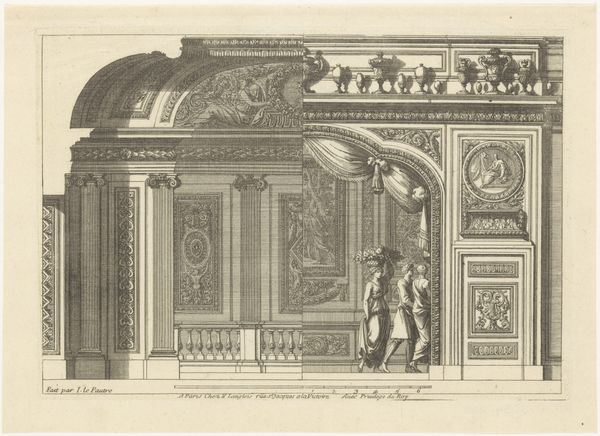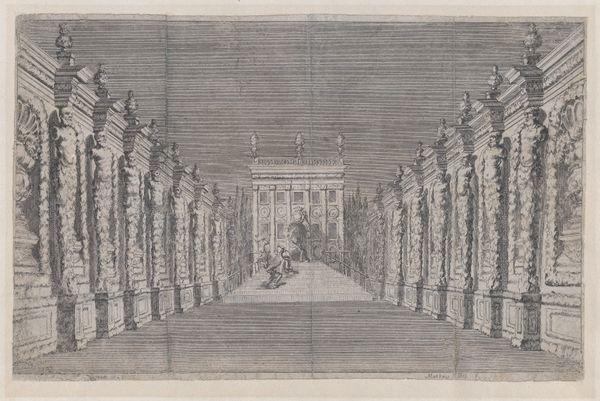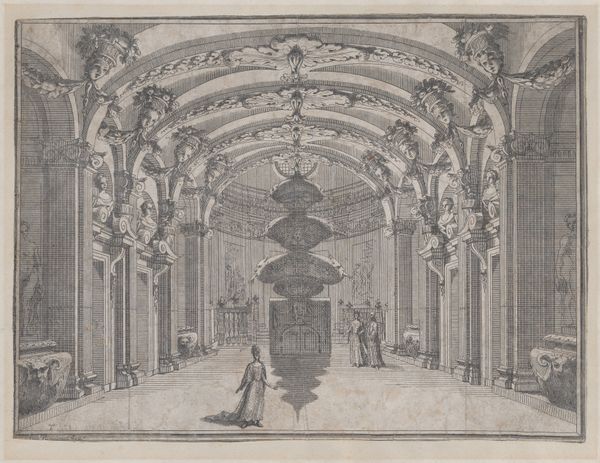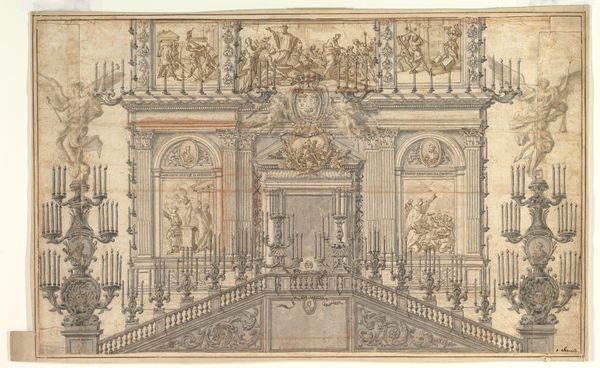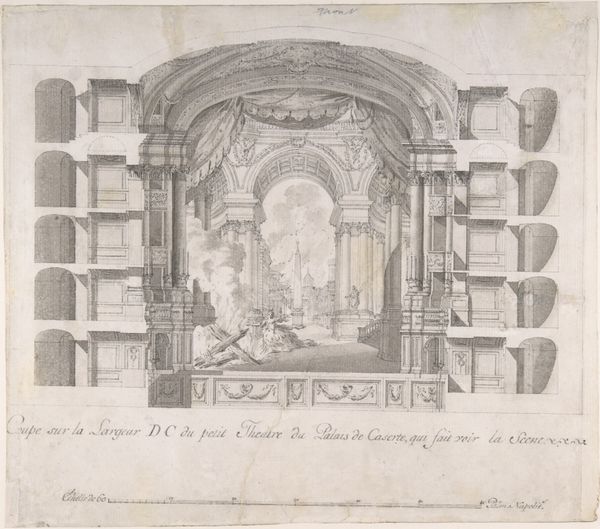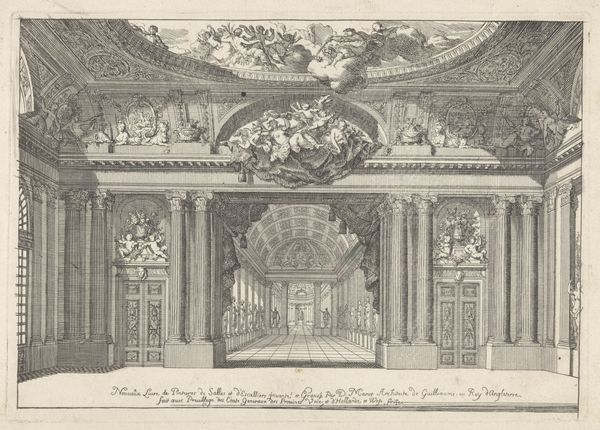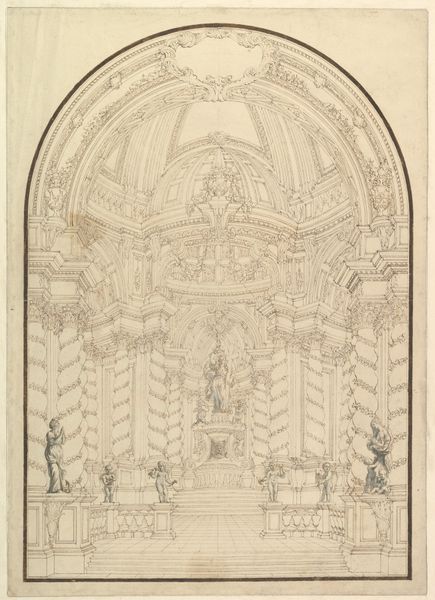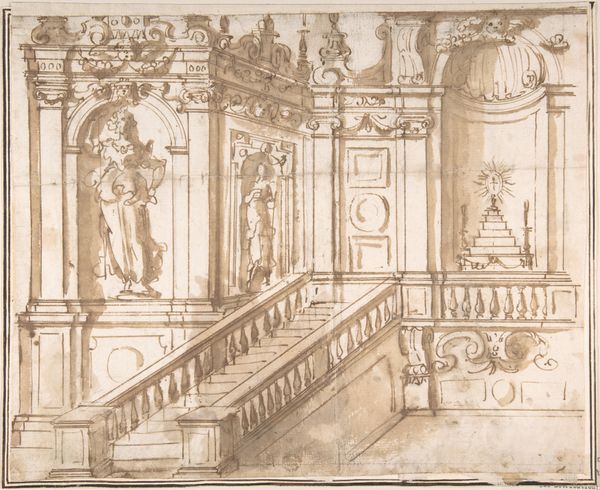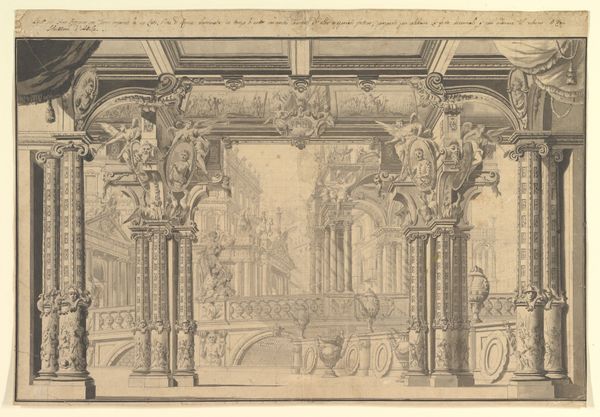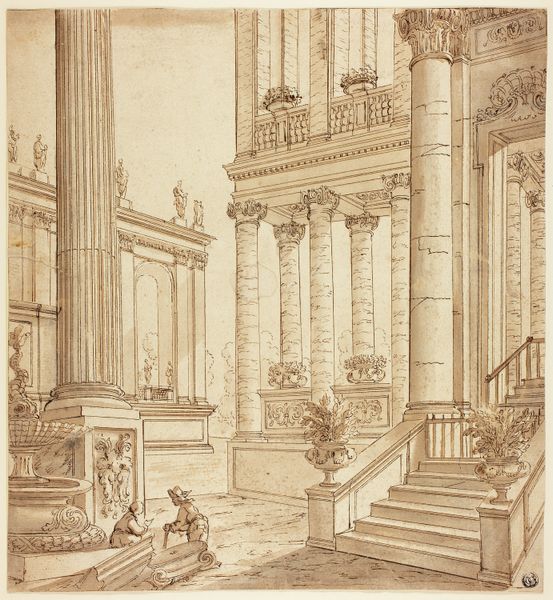
drawing, pencil, architecture
#
drawing
#
11_renaissance
#
geometric
#
pencil
#
architecture
Dimensions: 302 mm (height) x 397 mm (width) (bladmaal)
Curator: Before us is "Udkast til et rigt udsmykket trapperum", or "Draft for a richly decorated stairwell", attributed to Pietro Righini, dating from 1683 to 1742. It's a drawing, predominantly in pencil, held in the collection of the SMK, the National Gallery of Denmark. Editor: It’s a magnificent stage, isn't it? All meticulously rendered in gray pencil, giving it an almost dreamlike, ethereal quality despite the solidity of the architecture itself. The space just keeps ascending! Curator: Indeed. Notice the architectural rigor, the clear articulation of space through linear perspective. The ascending stairs draw the eye upwards, enhanced by classical elements—columns, arches, sculpted figures—orchestrated to create a sense of Baroque grandeur. The repetition is deliberate. Editor: All those precisely placed pencil marks representing something permanent, constructed—the labor involved in planning such a structure. Who was this grand staircase intended for? Whose hands would polish those marble urns, keep the stone swept? Curator: Consider the drawing's materiality. Pencil, a relatively unassuming medium, is here employed to capture elaborate architectural ornamentation. There is a tension. The choice, I propose, elevates the drawing itself. Editor: Agreed. There’s something fascinating about seeing a blueprint. I appreciate the unseen labor materialized in this image. I can almost feel the weight of the stones and the chill of the unfinished walls. Curator: It allows us to study structure and form stripped bare, purified almost of practical function, which focuses the viewing on shape and composition. Editor: It brings to mind how labor and materiality aren't separate concerns, here they intertwine. This isn't just an image; it hints at an environment shaped by intention and exertion. Curator: I appreciate the added depth of understanding—it makes it harder to simply label as "Renaissance". Editor: It complicates it! Now I see how social context shifts your initial reading.
Comments
No comments
Be the first to comment and join the conversation on the ultimate creative platform.
